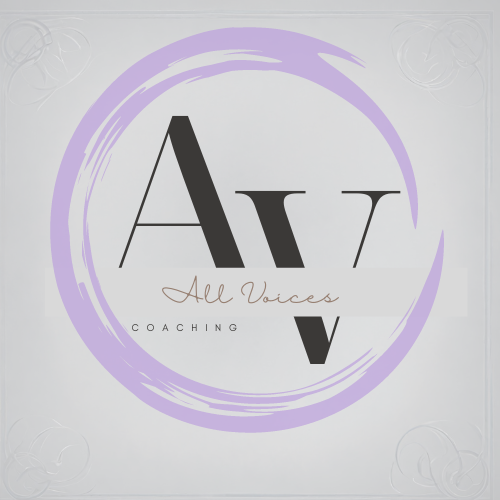Basic Grant Writing Steps for New Nonprofit Organizations
You’ve built your nonprofit from the ground up — mission clarified, programs designed, finances mapped out. Now comes one of the most intimidating (and often misunderstood) steps: finding and writing your first grant.
Grant writing isn’t just about persuasion or perfect formatting; it’s about alignment, storytelling, and integrity. When approached with clarity and care, it becomes a practice of resourcing community power rather than chasing dollars.
Let’s walk through a liberatory, accessible approach to grant writing that centers relationships, readiness, and the people you serve.
Understanding the Grant Writing Process
At its core, grant writing is a form of storytelling, but one that must translate community need into institutional language. Funders, whether government agencies, foundations, corporations, or individuals, want to see how your work connects to outcomes that matter to them. Your job is to stay authentic to your mission while building that bridge.
Think of the process less as “applying for money” and more as “inviting partnership.”
The Grant Writing Journey Includes:
- Building your internal system of organization and readiness
- Researching funders that align with your values and programs
- Understanding funder guidelines and funding priorities
- Writing a compelling, evidence-informed proposal
- Submitting with care and following up with the relationship top of mind.
Grant writing takes time, often several months, so plan ahead. You’re not just managing a deadline; you’re cultivating a cycle of trust and opportunity.
Step 1: Build Your Grant Management System
Before you write anything, create an infrastructure that supports you. A grant management system keeps your documents organized and accessible, reducing stress later.
You don’t need fancy software to start; a shared Google Drive or Dropbox folder and a spreadsheet can go a long way.
Include:
- Organizational documents: IRS designation letter, articles of incorporation, board resolution, staff bios/resumes, and current board list
- Financials: Current profit and loss report, balance sheet, board-approved budget, and a program-specific budget for each initiative
- Program materials: Clear project descriptions, outcomes, and community impact statements
Keeping these up to date ensures that when opportunities arise, you’re ready, not scrambling.
Step 2: Identify Funding Opportunities That Fit
The best grants aren’t just available; they’re aligned. Start by identifying funders who share your values and serve similar populations.
- Begin with advocacy networks or associations in your field (e.g., a health-based nonprofit might start with the American Heart Association).
- Visit your local library; many provide free access to the Candid Foundation Directory.
- Explore local community foundations, service clubs (Rotary, Kiwanis), or corporate giving programs at major retailers.
💡 A note on Grants.gov:
Federal grants can be powerful, but they’re often massive in scope and demand extensive capacity. Think of them as graduate-level opportunities, something to pursue once your systems, staffing, and partnerships are solid.
Instead, focus on building collaborative partnerships with organizations already funded through these channels. Being a subgrantee or partner can provide vital experience and credibility while expanding community impact.
Liberatory lesson: You’re not “competing” for crumbs, you’re co-creating abundance. Strategic partnerships expand the pie for everyone.
Step 3: Analyze Each Opportunity for Alignment
Once you’ve found a potential fit, study the funder’s priorities and past grantees. Does this opportunity resonate with your mission?
Create a simple tracking sheet (a spreadsheet works perfectly) that captures:
- Funder name and contact info
- Alignment with your mission
- Grant amount and purpose
- Deadlines and requirements
- Notes on relationships or introductions to make
Don’t just ask, “Can we get this?”, ask, “Should we?” Misalignment drains energy and trust. A smaller, well-fitting grant is worth far more than a large, misaligned one.
Step 4: Write with Heart and Evidence
Your proposal is your story told through data and structure. Funders want to know that your vision is sound, your team is capable, and your community is behind you.
To write a strong, human-centered proposal:
- Lead with your why: What change do you exist to create?
- Ground your case in both data and dignity: Include statistics, but also human stories and context.
- Be specific about outcomes, not just activities: What difference will this make?
- Use accessible, clear language; avoid jargon or inflated promises.
- Show collaboration: Highlight how you work with others, not just for them.
And remember: brevity is a kindness. Funders read hundreds of proposals — clarity stands out.
Step 5: Submit and Follow Up with Intention
Review your proposal thoroughly before submitting; spelling, tone, and alignment all matter. Ask a trusted peer to review it or consider hiring a grant consultant for feedback.
After submission, don’t disappear. Send a brief thank-you note or update the funder on new developments in your work. If you aren’t awarded, ask for feedback — it’s part of your learning process and builds future relationships.
In Closing
Grant writing is a creative and technical skill; it’s a form of storytelling, strategy, and stewardship. By approaching it through a liberation and human-centered lens, you transform it from a transactional process into a relational practice rooted in trust, care, and alignment.
Remember: the goal isn’t just to get funded; it’s to stay rooted in your mission and build partnerships that sustain both your organization and your community over time.

